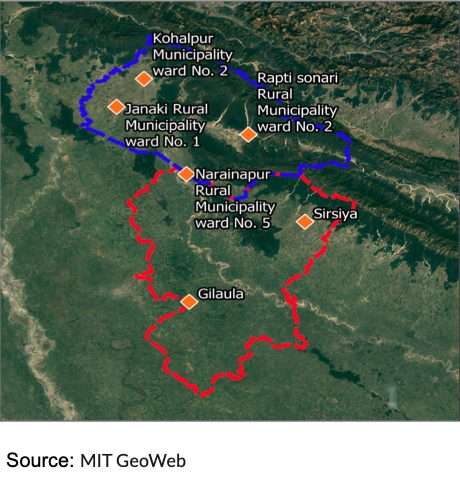This study aimed to understand how climate hazards impacts the livelihoods of farming communities.
Background
Climate change has adverse implications for crop yield, food supply, market prices and can further aggravate the situation of food insecurity and poverty in South Asian countries; adversely affecting the livelihoods of millions of people in the region (Schmidhuber and Tubiello 2007; Bandra and Chai 2014; Wang et al. 2017, Aryal et al. 2019). Afghanistan, Bangladesh, India, and Nepal are particularly vulnerable to declining crop yields due to glacial melting, floods, droughts, and erratic rainfall, among other factors (MoE 2010a; Tiwari et al 2014). Poor farmers with small holdings in India and Nepal are confronted with changing patterns of temperature and precipitation and increased occurrence of extreme weather events like drought and floods (Morton, 2007). With South Asian countries confronted with increased vulnerability to climate change, there is increasing policy focus and the governments of these countries have focused on initiating several climate resilient agricultural practices and policies.
In this context, it was deemed important to examine how climate variability and its related risks affected farmers’ as well as their choices of a portfolio of climate-resilient agricultural practices and the resulting association of these practices on economic outcomes of interest as farm yield, productivity and revenue. Understanding how farmers adopted various climate-resilient agricultural practices was also of interest. Finally, it was crucial for policymakers and practitioners to determine whether farmers in different regions adopted similar or different practices due to exposure to different policies or programs.
Objective
This study aimed to understand how climate hazards impacted the livelihoods of farming communities. It explored whether the adoption of climate-resilient agricultural practices varied with geographic differences and whether there was a link between these practices and economic outcomes such as income, yield and revenue. Additionally, researchers examined whether farming households in different regions, subjected to different policy regimes, responded similarly to Climate Resilient Agricultural practices (CRA).
Approach
A mixed-methods design was adopted for the study. The sample for the quantitative survey consisted of 1003 farmers (501 from India and 502 from Nepal) across a stretch of approximately 25 km of the India-Nepal common border in Shravasti (UP – India) and Banke (Nepal) district using spatial sampling. The quantitative surveys covered farmers with small, medium and large landholdings in Shrawasti, India and Banke, Nepal. Findings from the quantitative survey were corroborated with responses from IDIs, KIIs and FGDs with residents from villages in the above-mentioned districts along both sides of the border.

We conducted in person surveys with 503 farmers in Nepal and 502 farmers in India, across a 16 km stretch along the Indo-nepal border and covered a 1km radius. This area was divided into five 200 mts buffer zones and the stretch along the border was divided into four buffer zones. Within each buffer zone we conducted surveys with 20-25 farmers. These buffer zones were mapped using QGIS and the distances were determined keeping in mind i) survey feasibility in the presence of jungles and water bodies and ii) including farmers who are both near and farther away from the border to understand cross border information dissemination and climate resilient farming adoption patterns. We also conducted focus group discussions with both male and female farmers in India and Nepal to triangulate our findings from the surveys and to better understand female perception of and participation in farming activities.
Key Findings
1. Farmers did not have the preparedness to predict, absorb or mitigate the shocks from climate change.
2. There was high awareness and adoption of soil related climate resilient farming practices. However the practices adopted varied across both countries. Awareness and adoption of water and crop related practices in both countries was low.
Implications
The data will be used to understand the effects of climate change on current farming practices and consequently production. It will also assess farmer’s ability to adopt climate resilient farming practices. The findings can help bring forth gaps in awareness around and availability of resources which can then help improve formulation and implementation of policies on ground.

